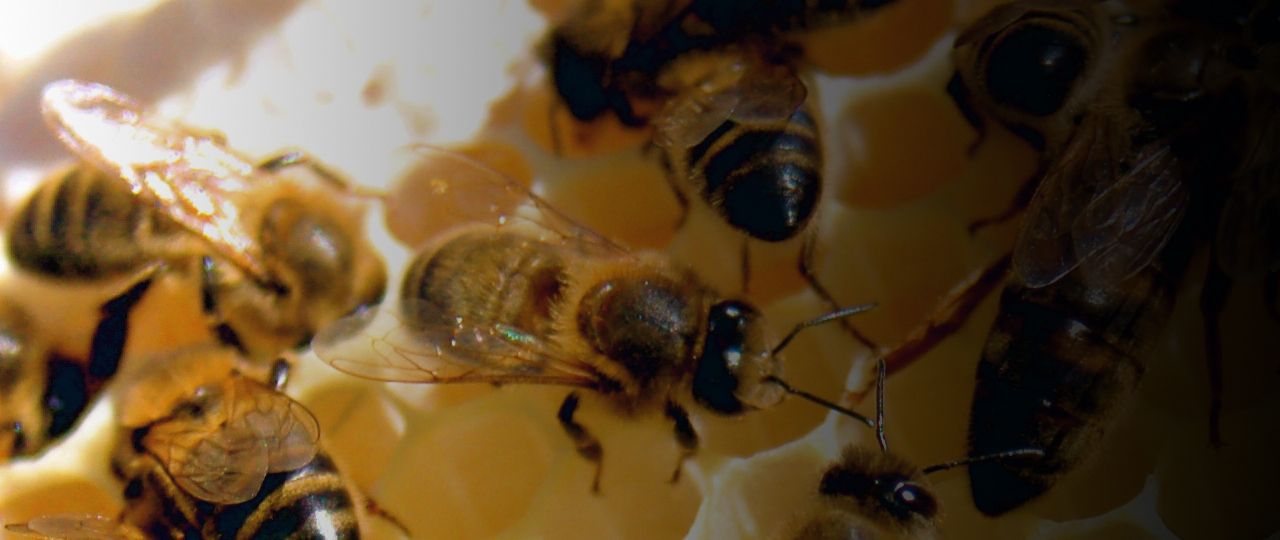
Beekeeping is a popular hobby - but it’s not for everyone. Check out our guide to see if it’s right for you and your property.
With bees becoming more endangered, beekeeping is seen as a way of providing some help to these vital insects. But is your property suitable for hives?
This century has not been a good one for bees. Post-World War 2 they fell into rapid decline. Then, in 2008 the UK lost 20% of its bee population. But a rise in colonies and amateur beekeepers has helped keep numbers up. Amateur beekeeper numbers in the UK rose from 8,500 in 2005 to 25,500 in 2015.
But is your home suitable for keeping bees? We asked Emma Ford, Rhodri Thomas' PA.
Do you have enough space?
A hive doesn’t take up much space and you can quite easily install one on your city balcony. In fact, the idea beekeeping is something people with large country estates do is a bit of a myth.
Bees benefit from being in urban centres as the variety of flowers and plants is much greater thanks to city parks and gardens. These areas also often have less harmful pesticides than large farms found in the countryside.
So space shouldn’t be an issue - though proximity to neighbours should be taken into consideration, especially if they have young children or anyone allergic to bee stings.
Finding the right location
Those with large gardens are fine, as bees can disperse in the garden before leaving. But if your hive is in a small garden or balcony, they will swarm around the area. When they leave they could cross other gardens, access paths or public parks.
Try and locate your bees so that when they leave the hive, their fastest path to flowers is away from these spaces. Also, make sure you buy bees from a well-respected supplier to make sure they’re good-natured and not likely to attack.
Emma Ford, from Strutt & Parker’s Salisbury Office, and her husband used to keep bees in their garden, but decided to move them to another location.
She said: “We used to keep hives on our garden, but it wasn’t large enough. We now keep them on a community farm. They’re close to both local allotments and large fields of oil seed rape. This gives them a good variety to choose from.”
When choosing a location for your hives, there are a number of things to consider. For example, to get bees to gain height when they leave - forcing them up and over neighbouring gardens – place hives near a solid wall, fence or hedge. It should be around two metres high.
If you live in a city and are looking for alternative locations to your garden, contact your local beekeeping association. They can point you in the right direction.
Your first hive
Emma has been keeping bees for 10 years now. From her experiences, she knows there’s a lot of time involved in setting up and keeping bees.
She said: “You can either buy a hive or build one. Building one takes time. Then you need to bring in a swarm. This can either come from a local beekeeper or, if you have an existing swarm, you can take half of it for your new hive. You then need a queen bee to hold the swarm together.
“The weather needs to be right for them. They won’t leave the hive if it’s very cold or wet. They tend to start flying when the weather gets warm in the spring.
“If your hive is well-established, you can expect your first honey harvest by the middle of the first summer. As the weather gets colder in the winter, they then start to hibernate.
“In the summer time it is quite time consuming. Every weekend you need to check them to see if their health is ok, or check that there’s only one queen in the hive. This takes a few hours. But come winter, you can just leave them be with an occasional check.”
But the results can be impressive, with Emma harvesting around 30 jars from each hive. And remember, you can have two harvests per hive – one in June and the second at the end of summer, usually around September.
Emma said: “As our hives are part of a local community farm that runs as a charity, we sell the honey in the farm shop. It goes faster than we can make it. All the money from the sales goes back into the charity.
“The first harvest, which we take around June time, mainly comes from oil seed rape as it is the largest flowering crop in early summer, and crystallises a lot quicker. When the later summer flowers are in bloom, the bees have more choice. I can’t taste the difference between the first and second harvest but our customers say they can.”
Spotting problems
Like looking after an animal, no matter how small, there are always going to be problems.
Emma’s biggest challenge so far was the Varroa mite. This tiny mite gets onto the bees and can eventually kill them. A few years ago, Emma had a whole colony die from it.
There are other things to look for as well. As honey bees usually live in trees several metres above the ground, they are used to dry and shaded areas. But as hives tends to be closer to the ground, they can become damp. Damp conditions, along with pests like mice and green woodpeckers, could need addressing.
If you’re keeping them on a farm, Emma warns of livestock. She’s had to enclose her bees as once a herd of cows came and knocked them all over.
